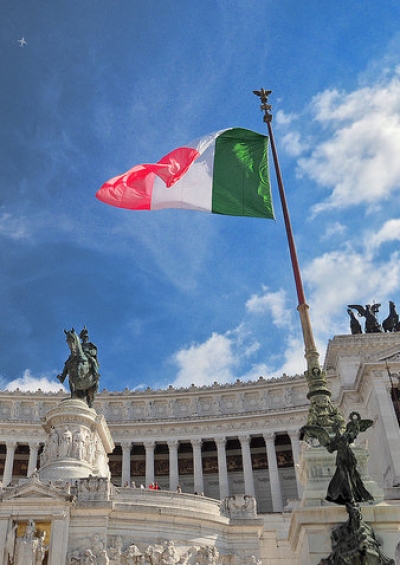Trump’s Steel Tariffs: Soft on China and Russia, Tough on Allies
Everything you always wanted to know about section 232 of the U.S. Act on steel and aluminum, but were always afraid to ask.
March 8, 2018
A few weeks ago, optimist commentators were still ecstatic about the fact that President Trump had not followed up on his promises to close the U.S. market to the foreigners who were, to quote Trump, “raping the country.”
No more. After several delays, the President has decided on the need for “safeguards” – i.e., import restrictions – against the imports of steel and aluminum. Trump officially did so to protect the “national security” of the United States.
This mechanism is known to the high priests of American protectionism as “Section 232.” The problems of the steel trade stem in large part from the overcapacity in China, but that doesn’t faze Mr. Trump much.
National security, really? The Pentagon does not think so: “… The U.S. military requirements for steel and aluminum each only represent about three percent of U.S. production. Therefore, DoD does not believe that the findings in the reports impact the ability of DoD programs to acquire.”
Truth is these measures have nothing to do with national security — and everything to do with lowly political motives: Trump feels obliged to give something to the 140,000 voters who allowed him to win the Rust Belt states.
Thus, the real purpose is not national security, but rather an “electoral insurance policy” plain and simple.
Can American “checks and balances” help?
Goldman Sachs estimates that the new tariffs will cost each of the Big Three auto manufacturers in Detroit $1 billion. They will probably try to ask the courts to overturn the decision, but history shows that judges are very wary when it comes to defining what exactly is “national security.”
Much hope is currently put on the U.S. Congress. However, Congress really fell in its own trap. Under the U.S. Constitution, it has full authority on tariffs and external trade, but it chose to delegate over the years part of its power to the executive branch.
All along, the assumption was that, in contrast to (childish) Congress, the executive branch was always going to be the “adult in the room,” better equipped to resist protectionist instincts. Sadly, there is no adult in the room anymore.
Any attempt in the U.S. Congress to restore order in the White House and reaffirm its authority on tariff matters would need a two-third majority. That is highly unlikely, given not only the number of Republican politicians still worshipping Trump, but also the fact that Democrats are electorally very beholden to the fiercely protectionist unions.
Favoring Russia
Equally disturbing: Why didn’t the President choose the solution offered by the Department of Commerce to raise higher tariffs against imports from Russia, one of the bigger exporters of aluminum to the United States, and a strategic adversary? This Trumpian benevolence certainly looks like collusion.
Why aren’t the allies of the United States exempted from the tariff measures? If national security were the motive, one would expect NATO allies, or Japan and Korea to be spared.
Evidently, in these days of America First, there are no more allies. Europeans should take note. So do Canada and Mexico.
How bad is China, the major culprit described as such by the report of the Department of Commerce, impacted?
Not much really. Imports from China were already subjected to many dumping or countervailing duties. As was the case with the safeguard on solar cells and panels, the rest of the world is more affected. Or, to put it another way, and use the suave prose of the President: “In Beijing, they are laughing their asses off.”
What should the European answer be?
The damage is real, but not catastrophic: EU countries represent 10% of the steel imports affected by the tariff. Ultimately, the decision will have an impact on the competitiveness of the U.S. industries that are big steel users, and thus help European firms: Why worry if the United States, the country where the NRA reigns, want to shoot itself in the foot?
The problem is less one of dollars and cents than it is systemic: If “national security” can be invoked as a fig leaf for any protection, what is left of WTO commitments?
The U.S. government should be worried about possible contagion: Does it make any sense under the circumstances to import military equipment from Washington?
Which brings us back to China. If you had to place bets in 2018, whom would you choose: The country that will be made great again by focusing on coal and steel, or the country that wants to promote the Internet of Things, artificial intelligence and renewables?
Would you pick the country made infamous by its SOEs (=state owned enterprises) — or the country that has become an EOS, an Enterprise Owned State, which aptly describes the United States.
Takeaways
Everything you always wanted to know about section 232 of the U.S. Act on steel and aluminum, but were always afraid to ask.
Trump has decided on the need for "safeguards" – i.e., import restrictions – against the imports of steel and aluminum. He officially did so to protect the “national security” of the US.
The real purpose of Trump’s tariffs on steel and aluminum is not national security, but rather an electoral insurance policy.
Why aren’t the allies of the US exempted from the tariff measures? If national security were the motive, one would expect NATO allies, or Japan and Korea to be spared.
If “national security” can be invoked as a fig leaf for any protection, what is left of WTO commitments?
